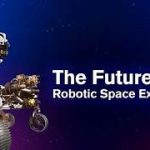AI in Analyzing Astronomical Data for New Discoveries
The cosmos has long been a source of fascination and mystery, with countless celestial phenomena awaiting discovery. As telescopes grow more powerful and data from space missions increases exponentially, the challenge lies not in collecting data but in analyzing it efficiently. This is where artificial intelligence (AI) has emerged as a revolutionary tool, transforming how astronomers explore the universe.
The Astronomical Data Deluge
Modern astronomy generates an unprecedented amount of data. Instruments such as the Hubble Space Telescope, the James Webb Space Telescope, and Earth-based observatories produce terabytes of data daily. Additionally, large-scale surveys like the Sloan Digital Sky Survey (SDSS) and upcoming projects such as the Vera C. Rubin Observatory’s Legacy Survey of Space and Time (LSST) promise petabytes of observations annually.
Analyzing such vast datasets using traditional methods is impractical. Human-driven analysis, while invaluable, is too slow and limited for the scale of modern astronomical research. AI, particularly machine learning (ML), offers a solution by automating and accelerating the data processing pipeline.
Machine Learning and Astronomical Data
Machine learning is a subset of AI that uses algorithms to identify patterns and make predictions based on data. In astronomy, ML algorithms are particularly adept at:
- Classifying Celestial Objects: ML can categorize stars, galaxies, quasars, and other celestial entities based on their spectral signatures or imaging characteristics. For instance, neural networks have been used to classify galaxies into morphological types, such as spiral or elliptical.
- Detecting Transient Events: Transient phenomena like supernovae, gamma-ray bursts, and fast radio bursts require rapid identification. AI models can sift through real-time data streams to flag such events promptly, enabling follow-up observations.
- Identifying Exoplanets: AI has significantly enhanced the search for exoplanets by analyzing light curves from missions like Kepler and TESS. Neural networks can detect the minute dips in brightness that indicate a planet transiting its star.
- Analyzing Gravitational Waves: The detection of gravitational waves by observatories like LIGO and Virgo relies on identifying faint signals buried in noise. AI has been instrumental in improving the sensitivity and speed of such detections.
Real-World Applications of AI in Astronomy
AI has already led to groundbreaking discoveries and advancements in astronomy:
- Discovering New Exoplanets: In 2018, researchers at Google and the University of Texas at Austin used a neural network to analyze data from the Kepler Space Telescope, identifying two previously overlooked exoplanets.
- Mapping the Universe: AI has been crucial in creating detailed 3D maps of the universe. For example, the Dark Energy Survey (DES) has used ML to classify millions of celestial objects, helping refine our understanding of dark energy and cosmic structure.
- Decoding the Cosmic Microwave Background (CMB): AI algorithms have aided in analyzing the CMB—the afterglow of the Big Bang—to study the early universe and the distribution of matter.
- Enhancing Astronomical Imaging: AI techniques like convolutional neural networks (CNNs) have improved the resolution of astronomical images by removing noise and reconstructing faint features, revealing previously hidden details.
Challenges and Ethical Considerations
While AI offers tremendous potential, its application in astronomy comes with challenges:
- Interpretability: Many AI models, particularly deep learning systems, operate as “black boxes,” making it difficult to understand how they arrive at conclusions. Ensuring transparency and reliability is crucial.
- Bias in Training Data: AI models are only as good as the data they are trained on. If the training data is biased or incomplete, the models may produce skewed results, potentially overlooking important discoveries.
- Resource Requirements: Training and deploying AI models require substantial computational resources, which may not be accessible to all researchers.
- Ethical Use: As AI becomes more integrated into scientific research, maintaining ethical standards in data usage and ensuring equitable access to AI tools are vital.
The Future of AI in Astronomy
The synergy between AI and astronomy is set to deepen as technology advances. Promising areas of development include:
- Citizen Science and AI: Platforms like Zooniverse enable citizen scientists to classify astronomical objects. AI can complement these efforts by pre-filtering data and highlighting unusual patterns for human review.
- Autonomous Observatories: AI-driven observatories equipped with robotic telescopes could autonomously schedule observations, optimize data collection, and respond to transient events in real-time.
- Interdisciplinary Collaborations: Collaborations between astronomers, computer scientists, and AI specialists will lead to innovative methodologies and tools, expanding the frontiers of space exploration.
- Quantum Computing Integration: As quantum computing matures, it could be integrated with AI to tackle the most computationally intensive problems in astronomy, such as simulating cosmic evolution or analyzing gravitational lensing data.
Conclusion
AI is revolutionizing astronomy, enabling researchers to process and analyze astronomical data at unprecedented scales and speeds. From discovering exoplanets to mapping the cosmos, AI has become an indispensable tool for unlocking the secrets of the universe. As challenges are addressed and technology evolves, the partnership between AI and astronomy promises to uncover new horizons, deepening our understanding of the cosmos and our place within it.


